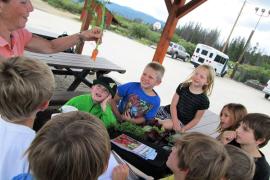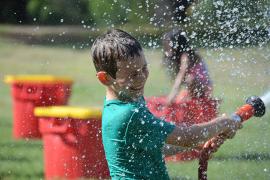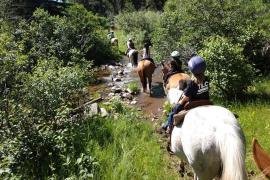Have you ever walked in to a meeting, a class, or even a practice or activity and thought “wow, I do NOT belong here”? What kinds of feelings does an experience like that evoke in you? Positive feelings? Do you want to return to that environment? Do you feel comfortable learning and trying new things? I doubt it. For most of us, feeling like we don’t fit in or don’t belong is not a pleasant experience. For those of you who have never been in a position like this, let me tell you a quick story…
At the age of 26, I decided I wanted to pick up another hobby and learn a new skill. I’ve always been pretty athletic and played a wide variety of sports growing up, however I had never been rock climbing before. Yes, I worked at a camp that had a climbing tower and had harnessed about 500 kids in my time there, but in terms of actual climbing experience, I’d gone up the “slanty” (aka “easy”) wall maybe 10 times in total. All in all, I would still consider myself a climbing novice. But guess what? There was an indoor climbing studio about five minutes away from my house and they had a promotion on for new members. Awesome — let’s try it!
I walked into the studio and immediately I was surrounded by climbing walls that must be at least a hundred feet tall (obviously not, but I’m painting a picture here, okay?), groups of friends of all ages decked out in the coolest and most fashionable gear, and a dusting of chalk in the air. I had never seen anything like it before. I thought to myself “Toto, we’re not in Kansas anymore.” I was hit with an overwhelming feeling of anxiety, self-doubt, and yeah sure, maybe fear, too. I knew nothing about this sport. Why would I think I could do this? Should I sign up for a lesson? What happens now? Bottom line — I don’t belong here.
Although this story appears in many shapes and forms, and how a child gets to this feeling of a lack of belonging is different for everyone, it is definitely not uncommon for many youth. As camp professionals, we want to ensure that every participant in our program feels welcomed and safe. But the real question is, how do we do that?
Forum for Youth Investment Webinar
Earlier this fall, the Forum for Youth Investment put on a webinar led by Shannon Davidson, Senior Researcher at Education Northwest, and Karen Pittman, President and CEO of the Forum for Youth Investment. The webinar focused on youth belonging: what it is, why it’s important, how it’s linked to social emotional learning (SEL), and how we can promote it in our programs. Today, I’m going to summarize the first part of the webinar on understanding what social belonging is and why it’s important. My next blog, Part 2 of the summary, will look at SEL and provide some suggestions on how to incorporate it into your programming.
What Is Belonging?
Let’s start by explaining what exactly belonging is and how it may impact youth and in particular, campers. Belonging is feeling like you are an accepted, legitimate group member. This feeling is unique to each person and is subjective in nature — one child may feel that they belong in a setting, while another similar (in age, race, gender, etc.) may not feel as if they belong. In addition, while a parent, caregiver, teacher, or youth leader may feel as if a child belongs in a group, that child may have a different perspective, and may not feel as if they “fit in” or belong. While some people may feel like belonging is simply a “want” and that it’s not absolutely necessary in order to be successful in a context, that’s not true. Belonging is actually a basic human need, and the failure to satisfy a sense of belonging in youth may actually lead to complications down the line, in adult life. Humans are social creatures that seek out relationships with others and must feel that they belong in order to feel comfortable engaging in social interactions. Once an individual feels a sense of belonging, a base has been created and the young person has the opportunity to develop emotional competence, self regulation, a growth mindset, perseverance, and future orientation. Believe it or not, physical pain and psychological pain activate the same regions of the brain and can exclusion (whether deliberate and intended by others or not) can truly hurt, the same way getting a cut or breaking a bone can.
When Is Belonging Important?
While belonging is important for everyone, there are a few key periods that it is especially critical. Feelings of belonging become essential during times of transition for youth. This includes the overall period of adolescence and puberty, but also any time a young person changes schools (think elementary to middle school, middle to high school, transition to college), joins a new team or club, or becomes involved in any youth programming. In addition, establishing a sense of belonging may be especially challenging, and therefore important, for any youth that identify with groups that are marginalized or underrepresented (e.g., different racial or ethnic groups, youth with disabilities, LBGT). In any new scenario, these youth may ask themselves questions like “do people like me belong here?” or “can I see anyone like me?” Keep in mind that individuals may feel a sense of belonging in one situation, like a team or club, but they may not feel that they belong in another, such as school.
How Do Youth Know They Belong (Or Don’t Belong)?
Both overt and subtle cues lead a person to establishing whether or not they feel as if they belong in any given situation. When you approach a group and say hello and don’t receive a response other than turned backs and laughter? Yup, that’s a clear sign that you don’t belong. If you walk into a classroom and the teacher smiles at you, well that’s a small cue that you are welcomed and do belong. As with any situation, what you pay attention to, you see more of. Youth who are already unsure of whether or not they fit in will notice more cues that they are unwelcome, whereas youth who feel comfortable and confident in their settings tend to notice all the nice things, or if there was something not so nice that happened, attribute it to a one-off or give people the benefit of the doubt (“I’m sure Amanda didn’t mean to ignore me, maybe she just didn’t hear me”). Although we cannot control every single interaction children have while at our camp, our goal as youth professionals is to create an environment and programming that ensures all participants feel that they belong while involved in our programs.
What’s Next?
Now that we know what belonging looks like and why it’s important, we need to take a look at our own practices and how they can be improved to foster more opportunities to belong for youth in our programs. My next blog will talk specially about social emotional learning (SEL) and some strategies for including SEL in your programs.
Stay tuned!
Victoria Povilaitis, a research assistant for ACA, is a doctoral student at the University of Utah and has worked in the camp industry in a variety of roles, including staffing coordinator, athletic director, and sports coach.
Photo courtesy of Triple C Camp in Charlottesville, Virginia.
Thanks to our research partner, Redwoods.
Additional thanks goes to our research supporter, Chaco.
The views and opinions expressed by contributors are their own and do not necessarily reflect the views of the American Camp Association or ACA employees.





